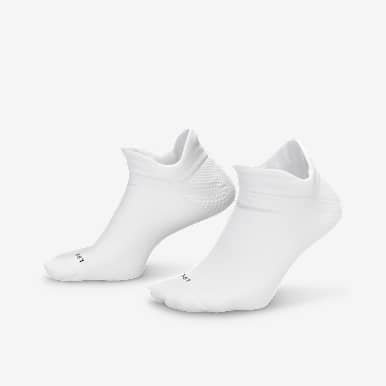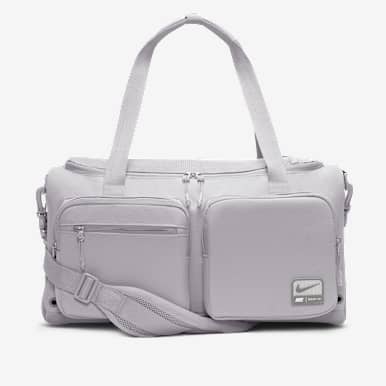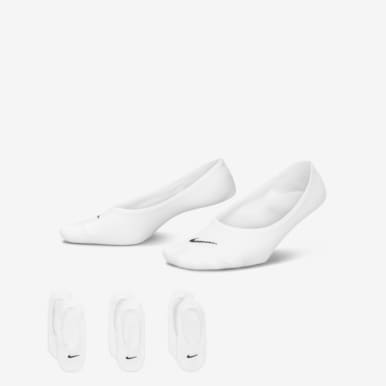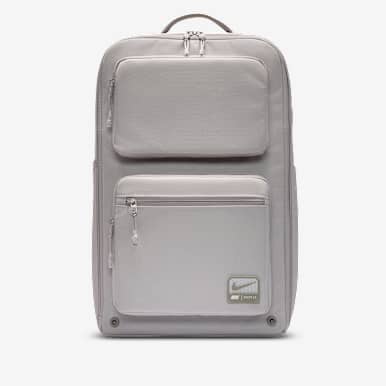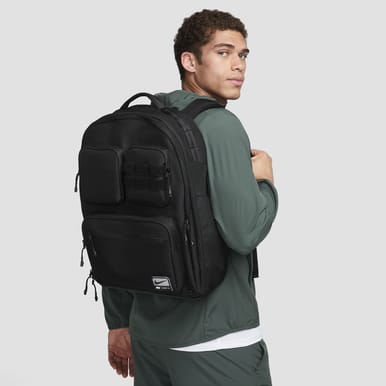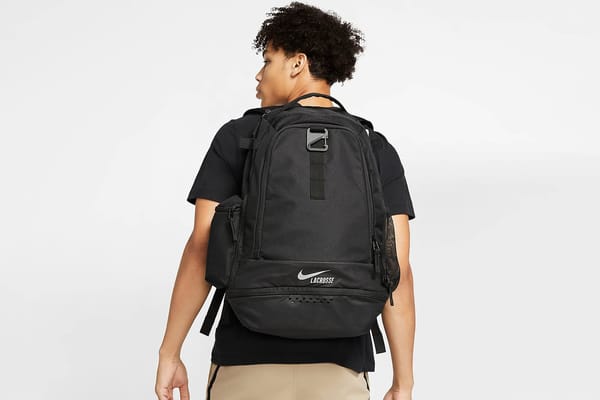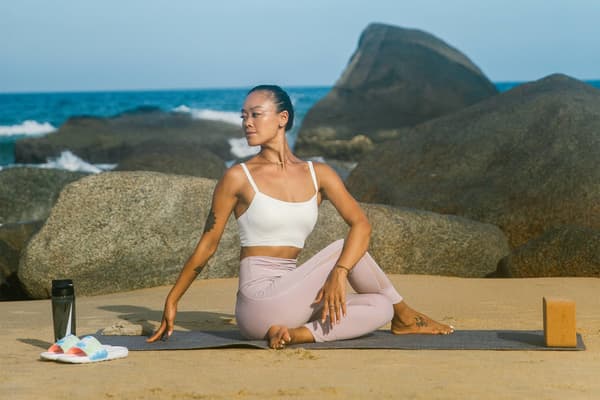10 Essentials for Starting a Yoga Practice
Buying Guide
Before you step into the yoga studio, you'll need some basic equipment and you may want some optional accessories too. Here's what to buy.

If you're just getting started with your yoga practice, you might not know what to expect, but you have a lot to look forward to. You'll be joining a tradition that dates back 5,000 years and provides numerous physical and mental health benefits. As you learn the yoga poses, you can enjoy improved strength and flexibility, better sleep, lower stress levels and a healthier heart. All of that will make you a better athlete.
Before you step into the yoga studio for a yoga class, you'll need some basic yoga equipment. And you may want to purchase some specific yoga clothing and an optional yoga accessory or two to support you as you learn how to move through a yoga flow. Here's the yoga equipment you might need to get the most out of your practice.
10 Essentials for Starting a Yoga Practice
1.Yoga Mat
Many yoga instructors require you to bring your own yoga mat to class, and you'll want one for practising at home. A good yoga mat provides better traction in your downward-facing dog, so you don't find yourself slipping out of the pose. A yoga mat will also provide a layer of cushioning between your body and the floor. Whether you're a beginner or an expert practitioner, you should pay attention to the following when choosing a yoga mat that meets your needs:
- Thickness: A thin yoga mat provides more stability for balance postures, while a thick yoga mat provides cushioning for poses that put your bones in contact with the ground. Standard yoga mats are about 3.3mm thick and provide a happy medium, but if your practice is more therapeutic, you may opt for a mat that is 6.4mm thick. Keep in mind that the thickness will also affect how heavy and bulky the mat is to carry with you.
- Material: The materials used to construct your yoga mat will determine how much traction it provides, how it feels, how long it will last and whether it will retain odours. Most mats are made from PVC or rubber. A natural rubber mat will provide grip, prevent odours and feel cool to the touch. As an added bonus, rubber and thermoplastic elastomers are more environmentally friendly than PVC. You may want to look for mats made from recycled materials.
2.Essential Yoga Clothing
When shopping for yoga clothing, it's most important to choose clothes that are comfortable and move with you. Here's what you'll need:
- Trousers or shorts: Choose a pair of trousers or shorts that stretch with you and stay put throughout your practice. A pair of tights with four-way stretch will do the job, as will a pair of joggers if you prefer looser-fitting bottoms. If you tend to sweat during yoga, opt for a pair with moisture-wicking capabilities, like those made from Nike Dri-FIT fabric. When selecting shorts for your yoga practice, make sure they are tight-fitting or come with compression liners to avoid exposing yourself during class.
- Sports bra: Yoga is a low-impact activity vs many other sports, but most women still prefer a light-support or medium-support sports bra.
- Tops: Opt for tops that are form-fitting to avoid baring your stomach during an inversion.
- Headband: Yoga practitioners with long hair will need a hair tie or headband to keep your hair off your face as you move.
- Yoga socks and gloves: While most yogis practise barefoot, you may feel more comfortable in a pair of socks designed to provide traction. If you're travelling without your mat, a pair of yoga socks and yoga gloves are essential for practising on the bare floor. They'll help provide the traction of a yoga mat without taking up space in your suitcase.
3.Yoga Towel
If you're participating in hot yoga, power yoga or any yoga sessions that cause you to sweat, you'll want a yoga towel to cover your yoga mat. This yoga accessory will help absorb sweat to keep you from slipping and risking an injury in your yoga practice. Make sure you get a mat towel designed for yoga rather than a regular bath or beach towel. Most yoga towels are made from microfibre to improve traction and are designed to prevent bunching. If you spray your mat with a little water prior to class, it will help your yoga towel adhere to your mat.
4.Yoga Bag or Sling
If you're lugging your yoga mat to and from the studio, you'll likely want either a mat bag or a sling to carry it. A sling will typically be less expensive, while a bag will provide extra pockets for storing your phone and other necessities.
5.Yoga Blocks
Blocks are a great accessory for anyone who doesn't have advanced flexibility, since they can help you ease into various poses. You can also use them to deepen a posture as your flexibility improves. For example, placing yoga blocks under your hands during a forward fold can help support you if you can't reach the floor, while placing yoga blocks under your feet in the same pose will require you to stretch further to reach the ground.
Choose a block that is at least 10.2cm wide for the most stability. And since some poses require two or three blocks, it's a good idea to buy them in a set.6.Yoga Blankets
Yoga blankets can provide extra support and cushioning during seated or lying down poses. You can buy a yoga blanket or use a regular folded throw blanket that you have at home. You can also use a yoga blanket to cushion your joints, lift your hips during seated poses, and even provide comfort and warmth during shavasana or corpse pose.
7.Yoga Straps
A yoga strap or yoga belt comes with an adjustable buckle to help you extend your reach and improve your flexibility and alignment. For example, a strap is a great accessory to deepen your seated forward fold if you can't reach your feet. You can wrap the strap around your feet and use it to pull yourself deeper into the stretch. Straps are also useful for opening up the shoulders if you can't get your hands together behind your back. And they can also be used for stability and balance in certain postures, such as boat pose.
8.Resistance Bands
If you're looking to maximise your gains in strength and endurance during your yoga practice, a set of resistance bands can add an extra layer of difficulty to your workout. Studies show that resistance bands can provide the same strength gains as conventional weights, and they're easier to incorporate into a yoga practice than dumbbells. For example, while you're in table-top pose, you can use resistance bands to perform banded donkey kicks to target your glutes.
9.Yoga Bolsters
Bolsters provide more advanced support than yoga blankets and are especially useful for therapeutic or prenatal yoga classes. Try out a round and a flat bolster to see what works best for your needs, or consider investing in both. You can lean onto a bolster during child's pose or use it to support a backbend or reclined twist. If you don't find yourself needing a bolster frequently, a regular pillow or cushion can also work.
10.Yoga Wheel
Yoga wheels can help provide support for beginners, and you can also use a wheel to challenge yourself as you get further along in your practice. Wheels are typically about 10cm wide and 30cm in diameter. As a beginner, you might use a wheel to support your back, neck and head during fish pose. As you get more advanced, you can use a wheel to make balancing in crow pose or holding a plank more challenging. You can even use a yoga wheel for innovative exercises such as a rolling lunge or rolling bridge.
Creating an Atmosphere
As you develop an at-home yoga practice, you'll want to create an atmosphere conducive to relaxation that helps you achieve a mind-body connection. You might play with the temperature in the room, bring in live plants or yoga-inspired artwork that motivates you, or utilise an essential oil diffuser to create a pleasant and soothing scent in the room. As you practise more frequently, you may want to set up a dedicated space in your home that makes you feel at peace.
Common Questions About Yoga Equipment
Do You Need Special Equipment to Practise Yoga?
You can get started with an at-home or in-studio yoga practice with nothing but a high-quality yoga mat and the right clothing. You'll need form-fitting clothing that stretches as you move and a non-slip mat. Beginners who want to ease into the practice should also strongly consider purchasing yoga blocks, a yoga strap and other yoga gear.
How Do You Care for a Yoga Mat?
You should clean your yoga mat at least once a month. If using a shared mat at the gym or studio, wipe it down before and after each use. For PVC yoga mats, you can use a drop of soap and a warm, wet cloth to clean both sides. Avoid using soap with natural rubber mats, since it can cause the material to break down. Instead, you can use a vinegar, alcohol or tea tree oil solution to wipe down your mat, or you can purchase a yoga mat cleaning product. Avoid hosing down or submerging your yoga mat. You should also store your mat away from the sunlight.
How Often Should You Replace Your Yoga Mat?
A general rule of thumb is to replace your yoga mat every six months to a year. The exact timing will depend on how often you practise and the durability of your mat. You'll know it's time to replace your yoga mat if:
- Your mat is retaining an odour, even after cleaning
- Your mat starts to thin in certain areas
- You notice peeling, rips or other signs of wear
- Your mat has lost its traction or become slick
Practising on an old yoga mat that is worn out can increase your risk of injury, so it's important to replace your mat at regular intervals.
What Type of Mat Is Best for Restorative Yoga?
If your intent is to reduce pain or recover from an injury, a thicker yoga mat will work best. Opt for one that is about 6.4mm thick and long enough for your height. You may also want to use a yoga blanket, block or bolster to provide extra cushioning and support.
